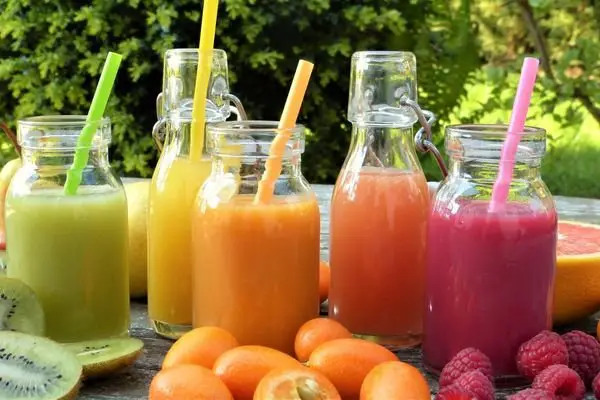Juices are a staple ingredient in many baked goods, from cakes and pies to muffins and bread. However, their role in baking may not always be clear. What Does Juice Do in Baking?
This question has puzzled bakers for years, and the answer is not as straightforward as one might think.
In this article, we will explore the many ways in which juice can impact your baked goods, from providing flavor to altering texture and even aiding in leavening. So, let’s dive in!

The Flavor Factor: How Juices Add Taste to Your Baked Goods
Juices, whether fresh or store-bought, can add a burst of flavor to your baked goods. The natural sweetness and acidity of fruit juices like orange, lemon, and apple can balance out the richness of baked treats like cakes and pastries. They can also complement the flavors of other ingredients like spices, nuts, and chocolate. Similarly, vegetable juices like carrot and beetroot can add a unique earthy flavor to your baked goods.
The Textural Element: How Juices Affect the Texture of Your Baked Goods
Juices can also impact the texture of your baked goods. For instance, adding apple juice to your bread dough can result in a softer crumb, while lemon juice can give your cakes a tender and moist texture. Additionally, juices can help in creating a crispy crust for pies and tarts.
The Leavening Agent: How Juices Can Help Your Baked Goods Rise
Juices can act as a natural leavening agent in some baked goods. For example, lemon juice can react with baking soda to create carbon dioxide, which helps the dough or batter rise. Similarly, orange juice can help activate yeast and create a light and airy texture in bread.
Commonly Used Juices in Baking
While there is no limit to the types of juices you can use in baking, some juices are more commonly used than others. Here are a few examples:
- Lemon juice: used in cakes, cookies, bread, and pie crusts for flavor, texture, and leavening.
- Orange juice: used in bread, muffins, and cakes for flavor, texture, and leavening.
- Apple juice: used in bread, muffins, and cakes for flavor and texture.
- Pineapple juice: used in cakes and bread for flavor and texture.
- Lime juice: used in pie fillings and glazes for flavor.
Tips for Using Juice in Your Baking Adventures
- Always use fresh, natural juices for the best flavor and texture.
- Pay attention to the acidity of the juice you’re using, as it can impact the leavening and texture of your baked goods.
- Use juice as a substitute for some of the liquid in your recipes, but be mindful of the amount you’re adding to avoid altering the recipe’s balance.
- Adjust the amount of sugar in your recipe based on the sweetness of the juice you’re using.
